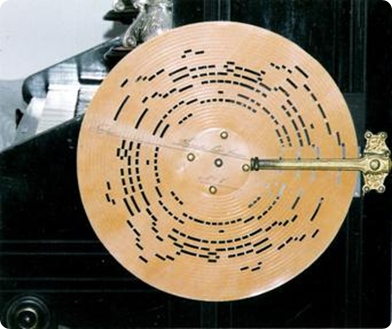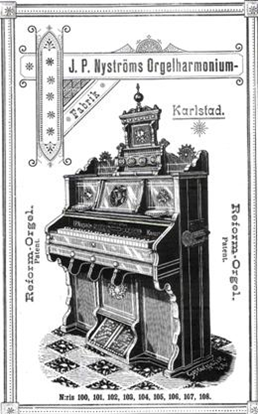Large ‘Reform organ’ (harmonium with self-playing mechanism), J.P. Nyström, Karlstad, 1895-1901, KH 40 (2000)
Towards the end of the 19th century, self-playing harmoniums became common. They had the advantage that they could be played both like a regular organ, and with a crank like a large music box for use in prayer houses and homes. J. P. Nyström in Karlstad made such instruments which he named ‘reform’ organs from about 1890 to about 1920. Other manufacturers were C.A.V. Lundholm in Stockholm and P.A. Lindahl in Kalmar.
The instrument had “utom vanlig klaviatur som kan användas av dem som lärt sig spela, även en mekanik, avsedd för dem som icke kunna spela” (besides the usual keyboard that can be used by those who have learned to play, also a mechanism, intended for those who cannot play). A disc with punched holes is attached to a mechanism on the right side of the organ, you crank and the organ plays “pretty much any piece”. For the reform organ, son Wilhem designed music copying and punching machines. Six music discs were included with each organ, but extra discs for SEK 1 each or 90 öre dozens were available for purchase. The repertoire included patriotic songs, chorales, marches, temperance songs and dances, i.e. music for moral edification and strength and for worldly pleasures and entertainment.

